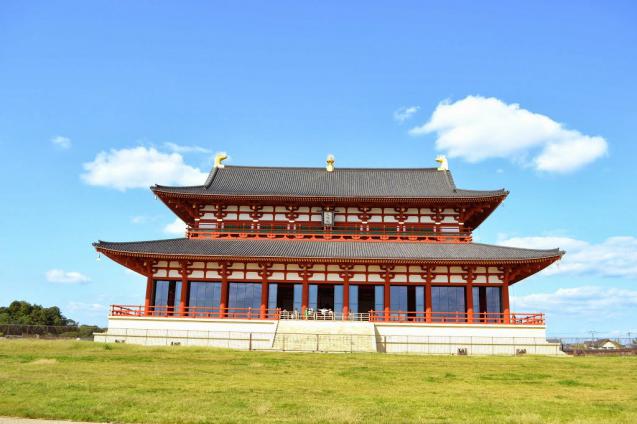
Heijo Palace located in Sakicho, Nara Prefecture was the Imperial Palace of Japan during the Nara Period. The remains of the palace, and the surrounding area, was established as a UNESCO World Heritage Site in 1998.
Heijo Palace is a square, about 1 km on a side, and was surrounded with high fences. In the site, there are the Emperor's residence, the palace for ceremony, and the offices of the government.
Things to see
The Former Audience Hall is the largest building on the palace grounds. It is used as the site of importat ceremonies and meetings. A throne stands in the center of the hall.
Suzaku Gate, the main gate of the palace to the south and the East Palace Garden which features a pond, stream and bridges.
At the northeast corner of the palace grounds stands the Excavation Site Exhibition Hall and the western end of the grounds is the Nara Palace Site Museum with artifacts, models, photographs and maps on display.
Lastly, the Heijokyo History Museum that features the replica of a ship used to travel between Japan ang China during the Nara period.
Heijo Palace is a 15 minute walk east from Yamato-Saidaiji Station, which can be easily reached from Kintetsu Nara Station by Kintetsu trains.
The palace opens at 9:00 to 16:30, entry is until 16:00.
Its free admission except for the Heijokyo History Museum that cost 500 yen. However, it is free for foreign tourist and passport is required.
Both are closed during Mondays and December 29 to January 3.
Submit Itinerary
Signup
- Sign Up
- Already a member? Login Now!
